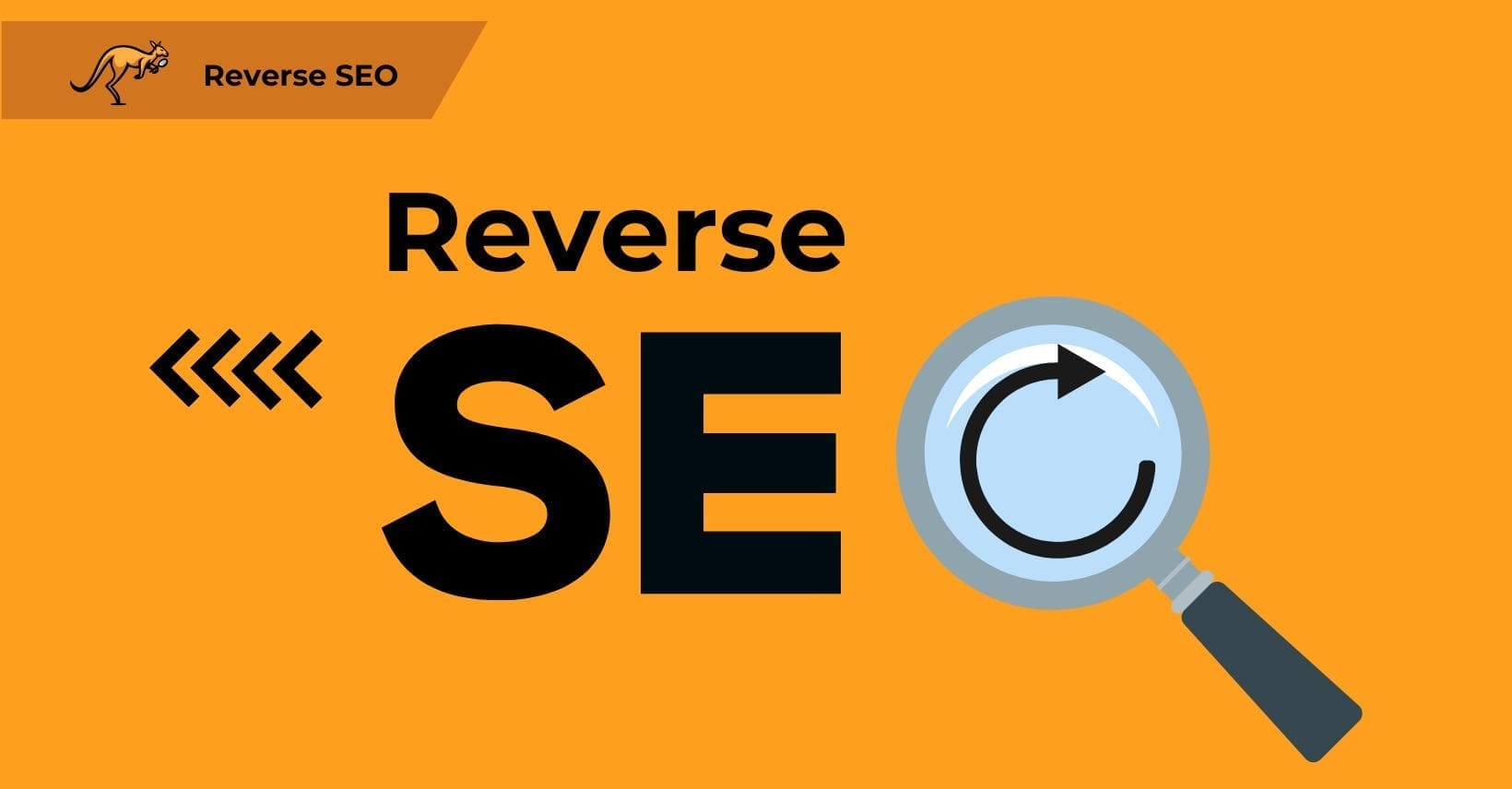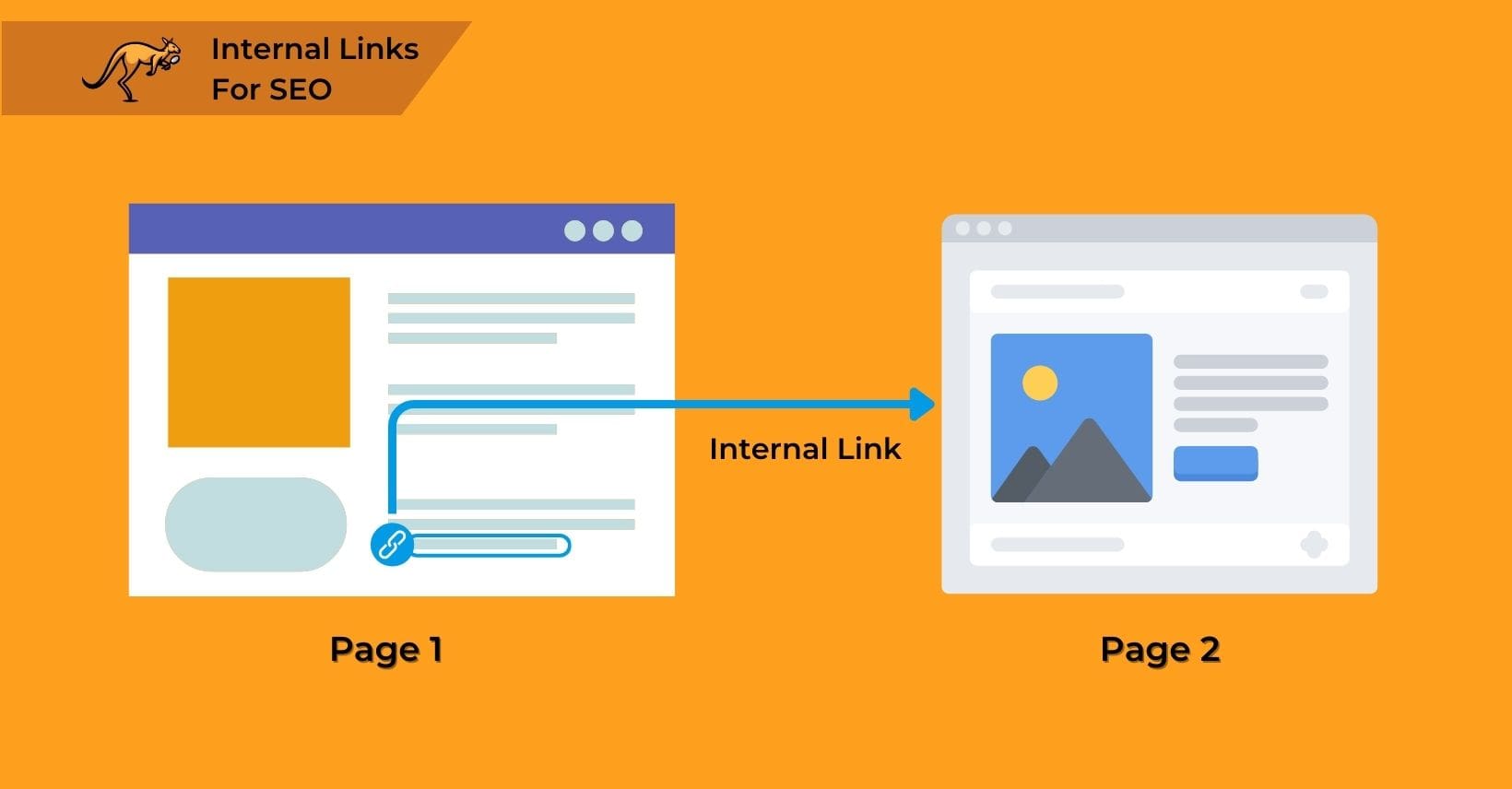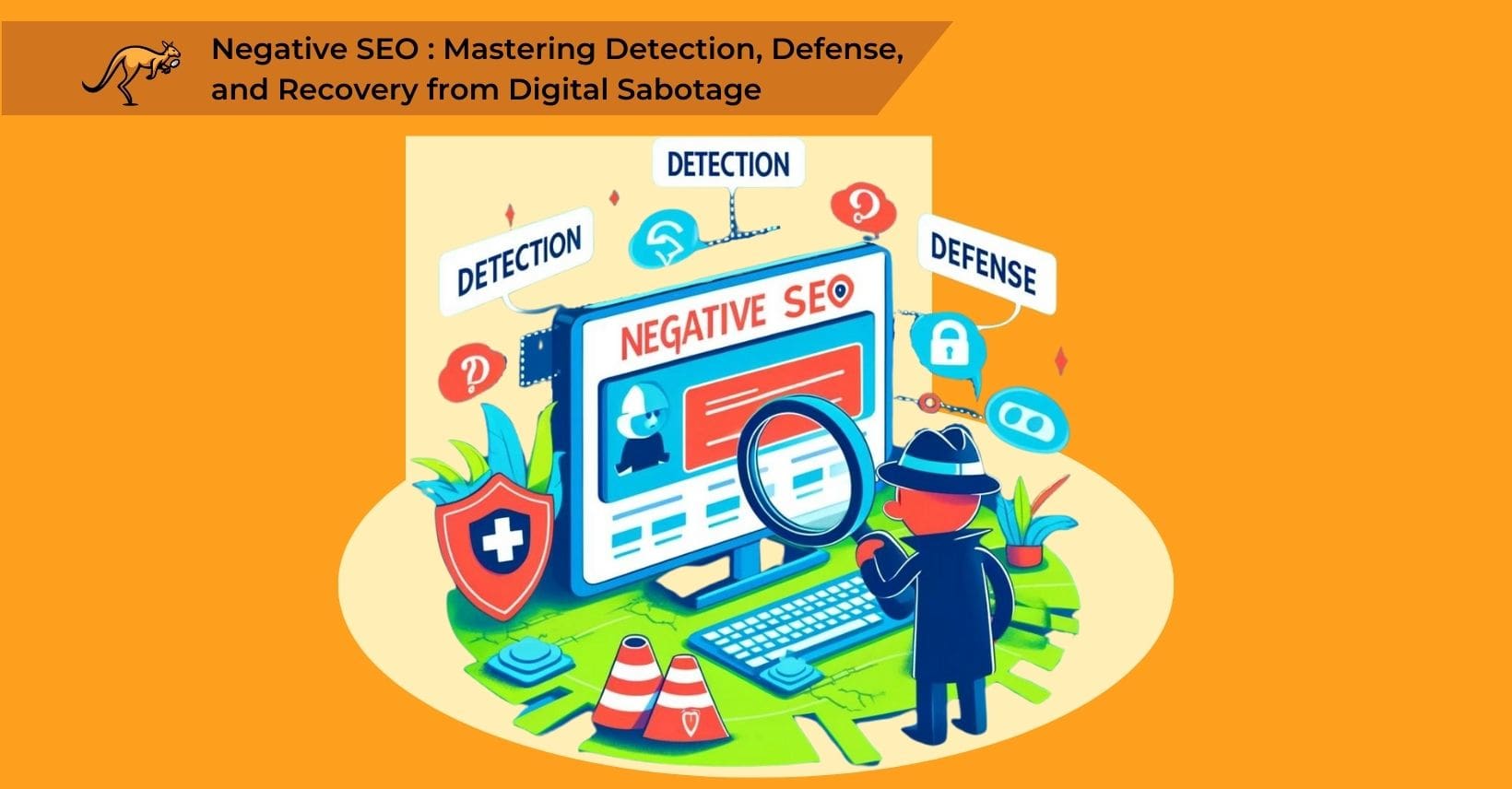Search engine optimization (SEO) is a critical tool for online business success, but reverse SEO proves equally potent, albeit in a different manner. Utilized primarily as an online reputation management strategy, reverse SEO helps brands enhance their public image by effectively managing negative content.
Unlike traditional SEO, which amplifies visibility through keywords and link-sharing to improve rankings, reverse SEO employs the opposite strategy: suppresses or hides detrimental content that could harm a business’s online reputation.
This guide delves into the intricacies of reverse SEO, explaining how it can be leveraged to protect and enhance your brand’s digital presence. Understanding reverse SEO and how it operates is fundamental for those seeking to maintain a positive impression through search engines.
What Is Reverse SEO?

Reverse search engine optimization (SEO) is a critical online reputation management tool that digital marketers, SEO experts, and brand managers use to prioritize a brand’s best image in search results.
Over time, a brand might accumulate associations with web pages or engage in tactics such as black hat SEO that no longer aligns with its current strategy or ethical standards. Reverse SEO aims to mitigate these misalignments by concealing outdated or damaging content that could tarnish the brand’s public perception.
This strategic approach involves suppressing unwanted links, negative web pages, and other detrimental content to disassociate them from the brand’s online identity. Central to online reputation management, reverse SEO removes harmful content and overshadows negative reviews and feedback, thus preserving a predominantly positive online presence.
This concerted effort to cleanse a brand’s digital footprint leads us to explore the underlying rationale of these practices, highlighting the importance of understanding the point of reverse SEO.
What Is The Point Of Reverse SEO?
While traditional SEO aims to elevate your visibility on search engine results pages (SERPs), reverse SEO serves the opposite purpose by mitigating negative content and search results to safeguard your business’s online reputation. This strategy involves suppressing undesirable outcomes, such as poor reviews or unfavorable website links, ensuring that searchers only encounter positive content regarding your brand.
Integrating reverse SEO with conventional SEO methods is important for comprehensive digital success, particularly because negative reviews can severely damage your online reputation, leading us to explore further the impact these detrimental assessments can have on a business.
Negative Reviews Can Ruin Your Online Reputation
Reverse search engine optimization can be used to hide certain web pages, links, and content from your search results by suppressing them.
There are various things that you may want to hide from search engines to control the results that appear for your business, and it is most common for reverse SEO to be used when it comes to negative reviews.
A negative review can ruin all the hard work you have done, developing a good reputation and presenting a positive image to your intended audience.
Whenever people search your target keyword, they may be met with low-quality backlinks, poor web pages, and negative reviews, all of which can impact the way they see your brand.
These negative results may still be recommended when people search for your keywords because they fit in with Google guidelines but do not go with the image you want to present.
This negative content may have been something you once published on your website or social media platforms but no longer align with. Negative content in search results may also come from negative reviews or feedback from previous customers, which you do not want new customers to see.
Reverse SEO is a way of suppressing these negative links so Google’s search results for your business present the best image of your brand.
All That Remains
Leveraging reverse SEO strategies effectively mitigate the impact of negative reviews or backlinks, ensuring your digital footprint reflects positively on your brand.
By promoting beneficial content and minimizing negative search results, reverse SEO is a strategic tool for enhancing your online reputation. This approach potentially boosts your search engine rankings by aligning with Google’s preferences for quality content and safeguards your brand’s image from the potential damage of negative visibility.
Consequently, when your target audience searches for relevant keywords, they’re greeted with positive insights regarding your offerings. This strategic removal of negative content and emphasis on the positive reshapes your online presence, casting your brand in the best possible light.
As we explore into the intricacies of reverse SEO, it’s important to understand its distinctions from negative SEO, clarifying its role as a constructive rather than a detrimental reputation management technique.
Is Reverse SEO The Same As Negative SEO?

As reverse SEO has the opposite impact on traditional search engine optimization, you may be concerned that it is a form of negative SEO that you have been warned against.
However, these are two different types of SEO and will impact your results on search engines in different ways.
Reverse SEO
A reverse SEO campaign is a way to create more positive reviews for your business by suppressing negative content and negative reviews.
This suppression alters the search results for relevant keywords for your business because it leaves online positive and relevant content behind. This is why it is an effective online reputation management tool used by professionals to create the best online image for your brand.
Negative SEO
Negative SEO tactics lower the search ranking of distinct web pages by using methods that degrade their visibility, unlike reverse SEO, which aims to enhance a brand’s online presence by suppressing negative information. While negative SEO might be employed to completely obscure web pages from search results, reverse SEO modifies public perception by ensuring only positive content surfaces in searches.
This protective strategy employed by brands prioritizes maintaining a positive public image, underlining the significance of reverse SEO as a important tool for online reputation management.
Why Reverse SEO Is Important
Now you understand these two forms of search engine optimization (SEO), it makes sense why you will want to create a reverse SEO strategy as a reputation management tool.
Professional marketers and SEO experts can work with you to develop a reverse SEO strategy that can help improve the Google search results for your brand’s keywords, ensuring positive reviews and good content remain.
How To Clean Up Search Engine Results Using Reverse SEO
After all the work you have done to get your business on the first page of Google results, you want to make sure these are only the best links.
If you find that a search of your brand is leading people to spammy backlinks, negative reviews, and other bad content, then you need to work on your reverse SEO campaign.
There are various methods that you can use for this reputation management technique, such as:
Identify The Issues
Before you can determine the reverse SEO tools you need to focus on, you need to know what is present in search engine results regarding your brand currently.
To identify the offending keywords that bring up negative search results for your brand, you need to search for your business. You can also do this by looking into any negative article that appears on the first page of Google search results regarding your business and seeing what keywords are used to get it there.
There are various SEO tools you can use to scan online content for keywords, which can highlight the terms you need to focus on in reverse SEO strategies. A professional SEO agency can also do this work for you.
When you find the target keywords that lead to negative content on Google, you can create a focus for your reverse SEO strategy.
Create Content With Target Keywords
Now that you know what keywords lead to bad content for your business, it is time to counteract this.
Content creation using this target keyword is perhaps the best tool, to begin with and allows you to actively work on covering bad results. By publishing content, such as press releases and articles, using the same target keyword, you are giving more results for Google to use on the first page.
Publishing these articles on your own or a branded content site that not only uses these target keywords but also works in accordance with other search engine guidelines is a great way to suppress negative search results.
With the same keywords, new positive content will be pushed on the first page of results as opposed to the older, negative results that are currently present.
This is especially the case if work is published on other reputable sites and contains the necessary web properties to rank highly. This is where traditional SEO methods will come in useful, such as guest posting.
Making use of the negative keywords in newer, positive content on your own website or others can essentially override the current search results.
This will then leave only the best for potential customers to find when they search these terms.
Ask For Positive Reviews
As a business that offers goods or services, you should request all your customers to leave a review following interactions.
Social media makes it easier for people to leave these reviews as well as giving you a platform to create a good reputation from the offset, but there are other sites that you can use for this, too.
If you have a good following on social media, people are more likely to leave positive reviews simply because they like and respect your brand.
As well as having review spaces on these platforms, make it easy for people to leave reviews on your site and on directories for more results.
It is important to note that while reverse SEO can make positive reviews enter the spotlight when it comes to search results; you also need to be offering a good service to warrant these kinds of reviews in the first place.
Create Business Listings
Adding your business profile to Google and business directories can be a good tool for reverse SEO.
This works by making more of the search engine results for your brand focused on business information, as opposed to the bad reviews or old content that may currently appear.
The more listings you appear in, the more results you can add to searches, but you should avoid bad links.
The quality of links is a big part of technical SEO and applies here, as the better quality directories you appear on, the greater the results will be for your branded keywords.
You need to use the same keywords in your business listing and offer spaces for reviews to add more to your search results.
Create Social Media Profiles
Leveraging social media platforms effectively contributes greatly to reverse SEO by enhancing your brand’s visibility and control over public perceptions.
Creating business profiles on platforms like Facebook, Twitter, and LinkedIn allows you to engage directly with your audience and suppress negative search results by promoting positive content. As you integrate these profiles into your main site structure and link them consistently across all digital presences, they boost your online reputation and ensure that your positive content is readily accessible.
This strategic use of social media profiles sets the stage for exploring how specialized reverse SEO tools can further refine and support your SEO efforts, yet optimizing your online presence and search engine rankings.
How Reverse SEO Tools Enhance Your SEO Effort
Reverse SEO tools are vital for managing and improving your brand’s online presence by suppressing negative content in search results. These tools help identify negative mentions and monitor them continuously, allowing for quick action against potential threats to your reputation.
- Content Management: These tools assist in promoting positive content and creating new high-ranking material to overshadow negative mentions.
- Link Analysis: They analyze inbound links to identify harmful ones that can be replaced or disavowed to boost your site’s authority.
- Review Management: Tools that manage customer feedback help enhance public perception by highlighting positive reviews and diluting negative ones.
- Automation: Many reverse SEO processes, like content publication and link monitoring, can be automated, improving consistency and saving time.
By leveraging these functionalities, businesses can preserve and enhance their online image, setting a foundation for full digital health. This strategic application of reverse SEO tools underscores their importance in shaping a brand’s digital strategy, leading us to the concluding thoughts on the strategic use of reverse SEO.
Concluding Thoughts on the Strategic Use of Reverse SEO
Reverse search engine optimization is the process of suppressing negative content in search results for a better online reputation.
This is a form of reputation management that can be used to clean up your online image and present the best possible face to potential customers.
By suppressing negative search results and creating new, better content, you are actively improving the way your business can be perceived through search results. This can lead to greater success and business growth.



